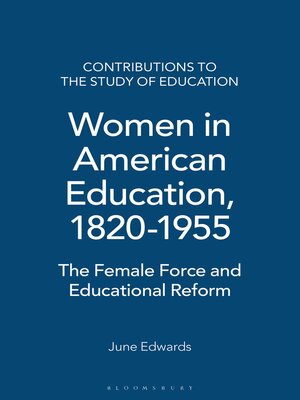Women in American Education, 1820-1955
ebook ∣ The Female Force and Educational Reform · Contributions to the Study of Education
By June Edwards

Sign up to save your library
With an OverDrive account, you can save your favorite libraries for at-a-glance information about availability. Find out more about OverDrive accounts.
Find this title in Libby, the library reading app by OverDrive.



Search for a digital library with this title
Title found at these libraries:
| Library Name | Distance |
|---|---|
| Loading... |
The lives and contributions of eight female educators who influenced modern American schools are described, as well as the historical context in which the women lived and worked. These women challenged the male establishment, broke barriers, and utilized techniques heralded today as radical reforms, such as teacher facilitation, student initiative, active learning, meaning construction, and practical applications of knowledge. They stressed open-ended research, creativity, and the integration of subject matter, and they promoted critical thinking, peer cooperation, and shared teacher/student decision-making. The women's methods were radical in their own day, and in many ways still are.
The female reformers described in this book opened the doors of education to the larger public, often working with people excluded from traditional institutions, including females, the very young, the mentally disabled, immigrants of all ages, homemakers, and African-American youth. Without government subsidy, most of these educators had to work with meager resources and constantly raise money for their schools and other projects by giving speeches, writing books and articles, soliciting wealthy donors, and even organizing bazaars and bake sales. With enormous confidence in the worth of their endeavors, they persevered despite many hardships and gave their entire lives to creating new educational and career opportunities.
The female reformers described in this book opened the doors of education to the larger public, often working with people excluded from traditional institutions, including females, the very young, the mentally disabled, immigrants of all ages, homemakers, and African-American youth. Without government subsidy, most of these educators had to work with meager resources and constantly raise money for their schools and other projects by giving speeches, writing books and articles, soliciting wealthy donors, and even organizing bazaars and bake sales. With enormous confidence in the worth of their endeavors, they persevered despite many hardships and gave their entire lives to creating new educational and career opportunities.







